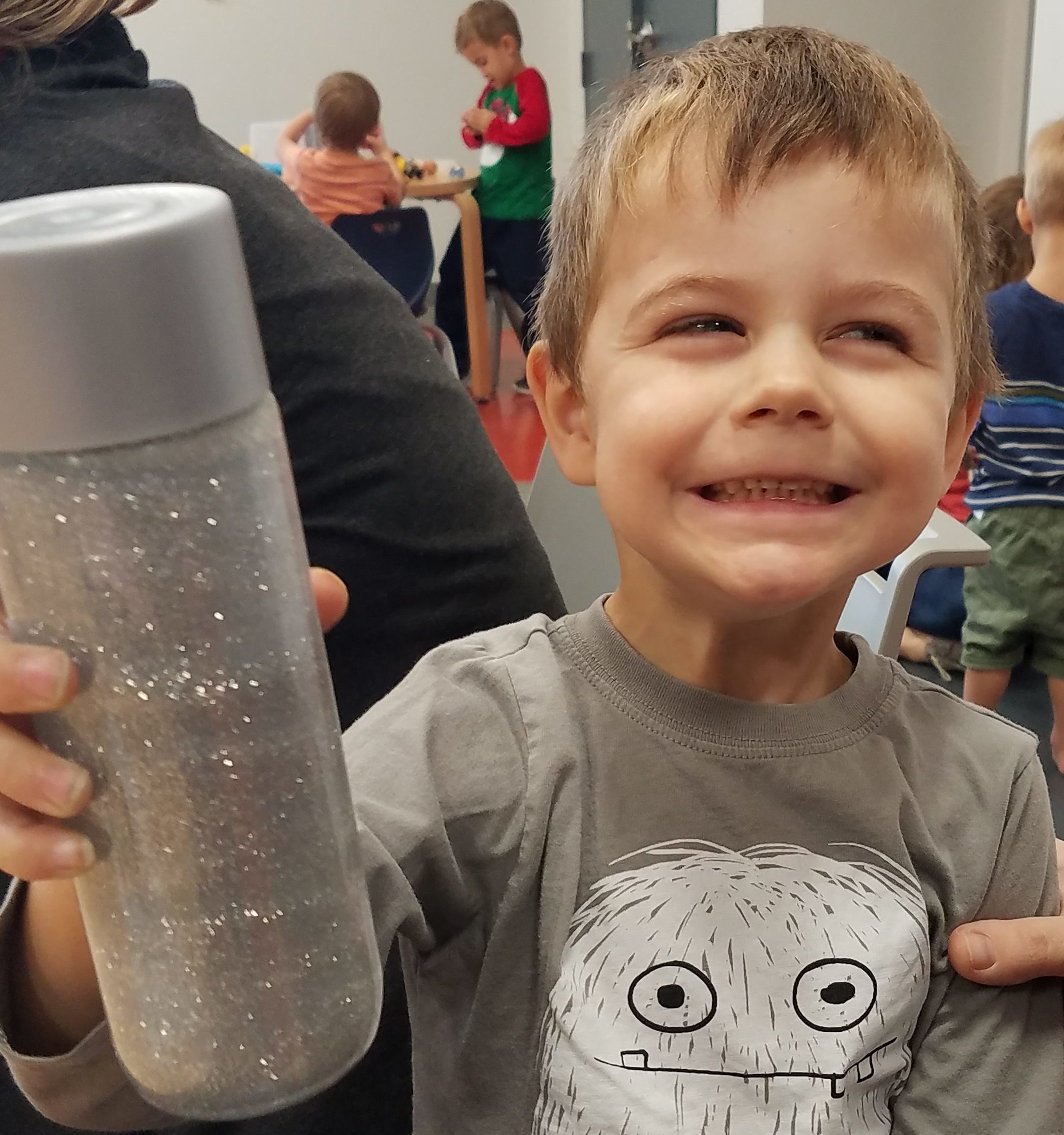Social and Emotional Skills:
There is a lot of talk about social and emotional skills in the early childhood development community. When we think of these skills, typically our first thoughts are related to feelings and emotions. While that is true, there is much more to social and emotional development then just how a child feels. Social and emotional development occurs as a child learns how to process and manage his/her own feelings, express his/her feelings to those around him/her in an appropriate way, assess and respond appropriately to other’s feelings and interact with peers and adults in a positive manner. Smiling, pointing, making eye contact, blowing kisses, taking turns, asking for help and yes, even temper tantrums, are all normal milestones a child experiences as his/her social and emotional skills develop. As these milestones happen, it is crucial that children have access to attentive caregivers who take the time to process and teach them how to handle each of these experiences.
Research shows that children who enter kindergarten with poor social and emotional skills have a significantly more challenging experience than their peers. These skills are instrumental in helping children feel confident away from their parents, asking for help from another adult, learning to trust other adults, engaging with peers, managing their emotions when they don’t get their way, taking turns, expressing their feelings appropriately and taking risks. Helping young children learn these skills is not always easy. It requires patience, understanding, and a healthy dose of laughter along with regular communication and ongoing teaching moments. Here are a few other tips for encouraging your child’s social and emotional development.
Activities to Support Social and Emotional Development
*** One of our favorite activities do to at Fun Van is make sensory bottles. These bottles are wonderful to help teach young children how to manage their feelings. These are great for shaking to get out frustrations or helping your child to calm down while watching the items swirl and sink.
 Here’s what you need:
Here’s what you need:
- plastic water bottle (we use the VOSS bottles)
- 1 bottle of glitter glue
- warm water
- food coloring
- heart stones or small water safe trinkets (from Hobby Lobby)
- hot glue gun

To start, pour about half of the bottle of glitter glue into the water bottle. Next, pour in the warm water. Also drop in some food coloring to make the water colored (since the glitter glue doesn’t color the whole water). Put the lid on and shake hard. It may take a minute to get the glue to mix with the water. Then open the lid and place the hearts in the water. Glue the lid on with a hot glue gun. Shake and enjoy!
- Read books to your children that highlight different emotions. Spend time talking about the emotions, why the character feels this way, if your child has ever felt this way, and what to do with this feeling. Try to choose emotions that are not often talked about in your day-to-day life (ex: jealousy, grief, frustration, and loneliness). This is called emotional literacy and is a great way to help children learn appropriate ways to handle feelings in a low stress environment.
- Use stuffed animals to help children learn how to take turns. Watch how your child responds when asked to take turns with the animal and help them problem solve through their feelings.
- Play games with your children. Allow them to practice winning and losing and how to handle both appropriately.
- Give your child a child-safe mirror to look at themselves while they experience different emotions. Help them label which emotions they are feeling in the mirror so that they can match how they look on the outside with how they feel on the inside.
- Plan play dates with other children or take them to activities that encourage social and emotional development. Fun Van is a great option! Model appropriate social interactions for young children and help them work through their problems. Give older children space to problem solve and work through frustrations while being present to intervene if needed.
- Give your child his or her own alone space to feel safe, experience emotions and calm down on his or her own. This can be a corner in your living space, their room, a play tent, or even just a comfy blanket with a few special stuffed animals.
- Play different types of music for your child. Talk about what each piece makes you each feel using feeling words. (ex: This song is so bouncy and quick. It makes me feel excited when I listened to it.)
- Above all else, listen to your child’s emotions and give them a safe space to feel them. It’s not a bad thing for children to feel strong feelings, but they need to learn how to feel these feelings appropriately.
